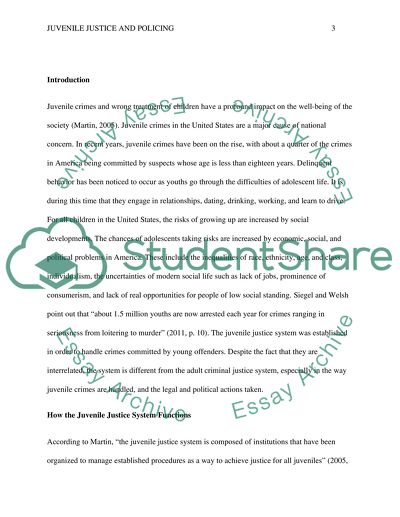Juvenile Justice and Policing Essay Example | Topics and Well Written Essays - 1250 words. Retrieved from https://studentshare.org/law/1473028-juvenile-justice-and-policing
Juvenile Justice and Policing Essay Example | Topics and Well Written Essays - 1250 Words. https://studentshare.org/law/1473028-juvenile-justice-and-policing.


